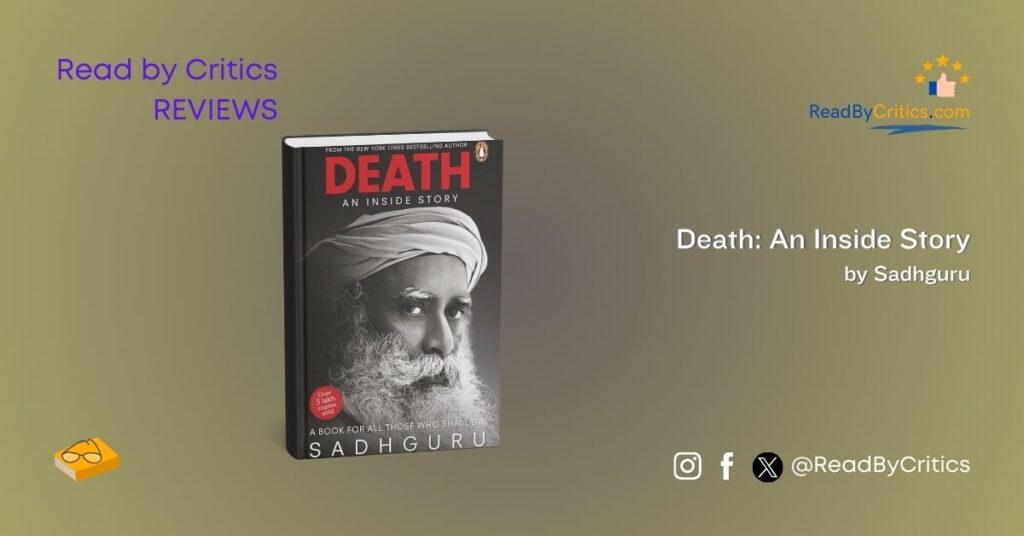Osho, born Chandra Mohan Jain, is a renowned spiritual leader and philosopher whose prolific writing has profoundly impacted contemporary spiritual thought. Known for his unorthodox and often controversial views, Osho’s literary oeuvre spans meditation, love, creativity, and existentialism. His works blend Eastern philosophy with Western thought, making his teachings accessible globally. “Courage: The Joy of Living Dangerously” is a quintessential example of his philosophy, emphasising the importance of embracing uncertainty and living with an open heart and fearless mind.
Essential Details About the Book:
“Courage: The Joy of Living Dangerously” is structured into ten chapters, each delving into different facets of courage and its role in personal growth. The book begins with exploring what courage truly means, distinguishing it from mere bravado or reckless behaviour. Subsequent chapters address the fear of the unknown, the courage to be oneself, and the importance of living authentically. Osho employs a narrative style that is both conversational and profound, using anecdotes, parables, and aphorisms to illustrate his points. The language is clear and direct, designed to provoke thought and inspire action in the reader.
Core Issues and Themes:
At its core, “Courage: The Joy of Living Dangerously” is a treatise on embracing life’s inherent uncertainties and the transformative power of fearlessness. Osho asserts that true courage involves a willingness to confront the unknown and live authentically, even in the face of societal pressures and personal insecurities. This theme resonates with ancient philosophical ideas, such as the Stoic concept of embracing adversity with equanimity and the existentialist belief in creating meaning in a chaotic world. Like the Stoics, Osho advocates for accepting life’s unpredictability, but he also emphasises joy and spontaneity, aligning more closely with existentialist thought.
Viability of Osho’s Suggestions in Contemporary Lifestyle:
Osho’s suggestions in “Courage” challenge the conventional approaches to security and comfort that dominate contemporary lifestyles. He urges readers to relinquish their need for certainty and control, advocating for a life led by intuition and inner truth. In today’s world, where stability and predictability are highly valued, Osho’s ideas may seem radical. However, his call for living authentically and fearlessly can be seen as a viable counter-narrative to the stress and dissatisfaction prevalent in modern society. Adopting his approach requires a significant shift in mindset, but for those willing to embrace change, it offers a path to deeper fulfilment and personal freedom.
Comparison with Other Books on Similar Themes:
When compared to other works on courage and personal development, such as Brené Brown’s “Daring Greatly” or Susan Jeffers’ “Feel the Fear and Do It Anyway,” Osho’s “Courage” stands out for its philosophical depth and spiritual insights. While Brown and Jeffers focus more on practical strategies for overcoming fear and building resilience, Osho delves into the existential dimensions of courage, offering a more holistic and reflective perspective. His integration of Eastern and Western philosophies provides a unique framework for understanding and cultivating courage, setting his work apart from more pragmatic approaches.
Criticism of the Book:
Having read “Courage: The Joy of Living Dangerously” carefully, I found that while Osho’s insights are undeniably profound and thought-provoking, the book has shortcomings. Sometimes, the narrative can be repetitive, with specific concepts reiterating without much new elaboration. Additionally, Osho’s dismissive attitude towards conventional lifestyles and his blanket disapproval of societal norms may alienate readers who find value in these structures. His philosophical musings, although enlightening, often lack concrete, actionable steps, making it challenging for readers to translate his ideas into practical changes in their everyday lives. Furthermore, some of his views can seem idealistic and detached from the complexities of real-world responsibilities and challenges.
Conclusion:
“Courage: The Joy of Living Dangerously” is a profound and inspiring read for anyone seeking a more authentic and fearless life. It suits readers interested in philosophy, spirituality, and personal growth. Osho’s teachings challenge conventional wisdom and offer a transformative perspective on courage, making this book a valuable resource for those ready to embrace the uncertainties of life with an open heart and adventurous spirit.
Get a copy from Amazon India – click here.
Confused? Here is an Osho survival guide by Desi Readers’ Bloggers: How to read Osho?
Review by Devvrat J for ReadByCritics
Courage: The Joy of Living Dangerously by Osho Book Review
-
Critical Rating
Summary
It can be too dangerous if you don’t read carefully. Osho is no more here to save you! The book, no doubt, is eccentric and enjoyable as far as you do so. You may be in trouble once you ponder implementing the idea(l)s!




